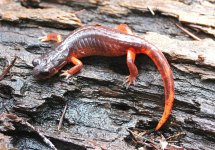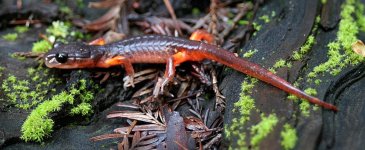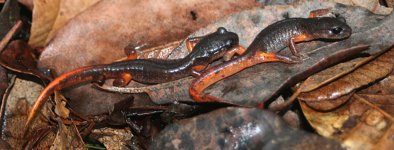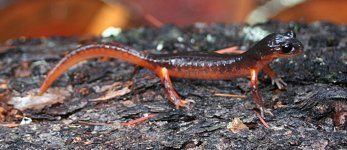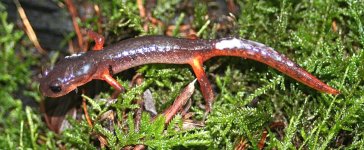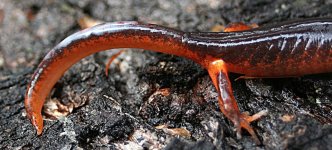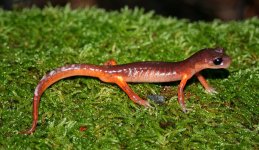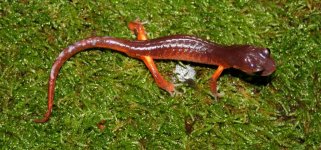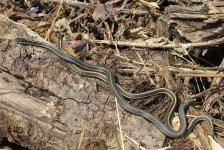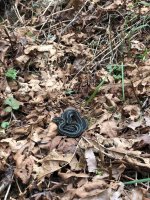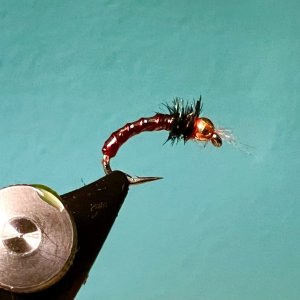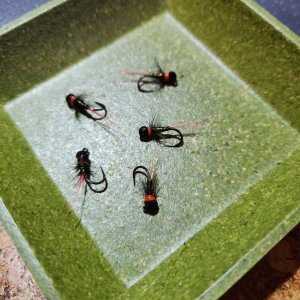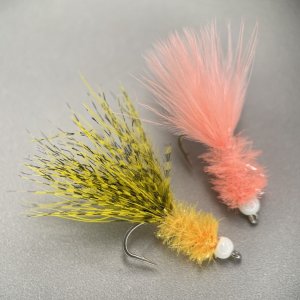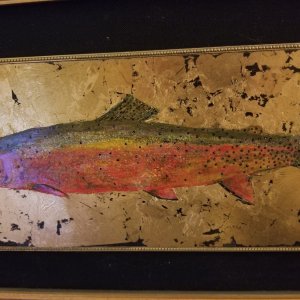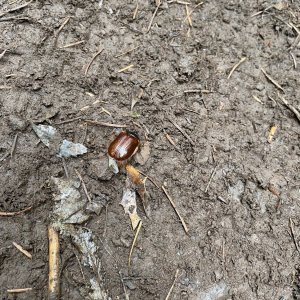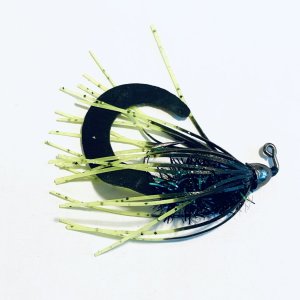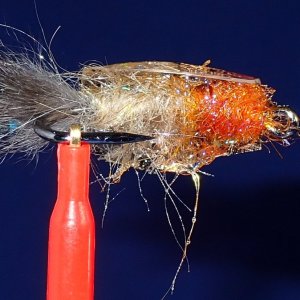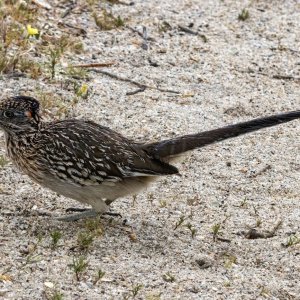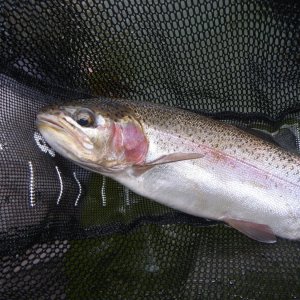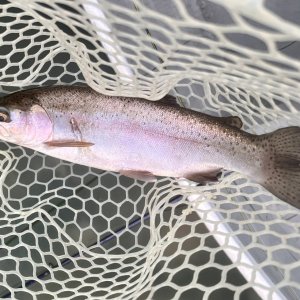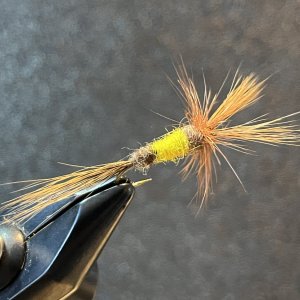Hi Mark and RCF,Do you know what kind of salamander it is?
That is a long-toed salamander, Ambystoma macrodactylum. They are the most common salamander species in Washington. But because they spend most of the year underground, they are not often seen. That individual is probably looking for a vernal pool for the mating season. They have aquatic larvae that spend several weeks in ponds, pools, or ditches. Their populations can be at risk locally if there are fish predators in those ponds, especially introduced brook trout at higher elevations.
@SculpinSwinger 's (and @Mark Melton 's earlier) images are of a rough-skinned newt, Taricha granulosa. It is also probably wandering to a breeding pond. But this species possesses a potent chemical defense against predators in its skin glands (enough to kill several people...). These glands release a neurotoxin, called tetrodotoxin, which blocks sodium channels in nerves. This leads to paralysis and asphyxiation. [This same toxin is found in a wide range of marine animal, including the blue-ringed octopus, some crabs, snails, chaetognaths (arrow worms) and starfish, and in some other toad and newt species. With the exception of Taricha, the tetrodotoxin appears to be produced by specific bacterial species that live either symbiotically with the animal or that the animal obtains through its diet and then concentrates and sequesters. Tetradotoxin-producing bacteria have NOT been found for Taricha, but it is hard to prove a negative...]
Some populations of the common garter snake (Thamnophis sirtalis) have evolved some level of resistance to the tetradotoxin in the skin glands of Taricha. The salamanders themselves are somewhat vulnerable to their own toxin = resistant but not immune. This had lead to the hypothesis that the relationship between the newts and garter- snakes are an evolutionary arms race where the more resistant the local garter snake individuals are the more toxic the newts become. And the more toxic the local newts are, the more resistant the local garter snakes become because only highly resistant snakes survive encounters with these salamanders. Somewhat complicating (but not negating) the arms-race analogy is a recent study that demonstrates that the newts can regulate the concentration of toxin that is produced based on perceived risk.
Steve


